Grammy Award-winning rapper, Coolio’s cause of death has been revealed as a fentanyl overdose, according to a recent report by CNN and The New York Times. The rapper, whose real name is Artis Leon Ivey Jr., passed away on September 28, 2022, at the age of 59.

© Alex Valentovich / New Fury Media / Riot Fest Chicago 2022
The New York Times reported that Coolio had tested positive for fentanyl, a synthetic opioid that is 50 times more potent than heroin, 100 times more potent than morphine (CDC) and has been responsible for a surge in overdose deaths in recent years. The amount of fentanyl detected in Coolio’s system was small, but it was determined to be the cause of death, along with coronary artery disease.
Coolio rose to fame in the 90s with hits such as “Gangsta’s Paradise,” which won a Grammy for Best Rap Performance in 1996. He was also known for his appearances on reality shows such as “Celebrity Big Brother” and “Wife Swap.” His death was met with an outpouring of condolences from fans and fellow artists.

So many families including Coolio’s have suffered the loss of their loved ones. The revelation of Coolio’s fentanyl overdose highlights the ongoing opioid epidemic in the United States, where thousands of people die every year due to opioid-related overdoses (CDC).
Fountain Valley Officials Applaud Naloxone Program at Area SchoolsAt the first Fountain Valley mayor’s breakfast of the year, held on March 30 at Fountain Valley Regional Hospital in Orange County, California, several local issues were discussed, including a recently established drug program in schools. The program, which was initiated last November, aims to prevent overdoses in youth by placing drug stations with naloxone, a nasal spray that can reverse the effects of opioids, in schools. The program comes in response to the growing number of children overdosing on fentanyl across the state and country.
Why is this program important?
The opioid crisis has become a major concern in many communities, and youth are particularly vulnerable to its effects. Illicit drugs laced with fentanyl, a powerful synthetic opioid, are increasingly being sold to unsuspecting youth, often through social media platforms. This has led to a rise in overdoses among young people, including in schools. The drug program in Fountain Valley schools aims to address this issue and provide a timely response to overdoses, potentially saving lives.
What does the program involve?
The program involves placing naloxone stations in each elementary school, middle school, and high school in the Fountain Valley area. These stations are equipped with naloxone, a medication that can quickly reverse the effects of opioids and prevent overdose deaths. The naloxone is administered through a nasal spray, making it easy to use by school staff or other trained personnel in case of an emergency. The program was initiated by the Fountain Valley Fire Department and Emergency Medical Services teams, in collaboration with city officials.
Success of the program
Since its implementation, the program has already proven successful in saving a student’s life. In January, a student at Ocean High School who had taken an unknown substance bought off the street that was laced with fentanyl was administered naloxone by a teacher, according to Fountain Valley Fire Department Chief Bill McQuaid. The timely treatment with naloxone, also known as Narcan, saved her life, highlighting the importance of having naloxone stations in schools.
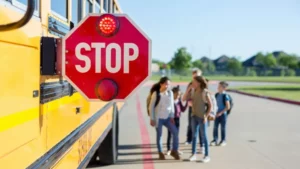
Why is this program necessary?
Lauren Lee, a former emergency room nurse who developed the plan for the school stations and currently serves as the Emergency Medical Services manager for the city fire department, emphasizes the importance of the program for student safety. She notes that a growing number of kids, including those in elementary school and older, are buying illicit drugs from dealers on social media sites, often through platforms like Snapchat. These drugs are sometimes misrepresented as harmless, such as marijuana gummies, when in fact they are laced with dangerous opioids like fentanyl. The presence of naloxone stations in schools can provide a crucial intervention in case of an overdose, potentially saving lives.
In conclusion, the drug program implemented in Fountain Valley schools to prevent overdoses in youth is a timely and important initiative. With the opioid crisis affecting communities across the country, it’s crucial to have measures in place to address the growing number of overdoses, including among young people. The presence of naloxone stations in schools can provide a lifeline in case of an overdose, potentially saving lives and protecting the well-being of students. As the program continues to be implemented and expanded, it is hoped that the need for naloxone stations in schools will decrease in the future, reflecting a reduction in overdoses and improved awareness about the dangers of opioids among youth. In the meantime, the program serves as a valuable resource to protect the health and safety of students in Fountain Valley schools. So far, the program has already demonstrated success in saving lives, and its continued implementation and expansion are critical in addressing the ongoing opioid crisis and protecting our youth.
Alexandra’s Law Fails in Senate Committee: What This Means for the Fentanyl EpidemicAlexandra’s Law Fails in Senate Committee: What This Means for the Fentanyl Epidemic
On Tuesday, Senate Bill SB 44, also known as Alexandra’s Law, failed to pass in the Senate Public Safety Committee. The bill, jointly authored by Senators Umberg & Ochoa Bogh, proposed implementing a fentanyl admonishment in California to address the growing opioid crisis.
The bill required issuing a written advisory or admonishment to a person convicted of a fentanyl-related drug offense, informing them of the dangers of manufacturing and distributing controlled substances, and potential criminal liability if someone dies due to their actions. However, the bill did not pass the committee, though it was granted reconsideration for a later hearing.
Why Is Alexandra’s Law So Important?
Fentanyl is an opioid 50-100 times more potent than morphine, with a rapid onset and short duration of action. It has become increasingly prevalent in street drugs and has been responsible for thousands of deaths across the U.S.
California alone accounts for approximately 11.5% of the 101,751 drug overdose deaths that occurred in the U.S. in the 12-month period ending in October 2022 (CDC).
The impact of fentanyl is devastating, with youth under age 24 accounting for the fastest rise in drug deaths. In California, a young person under 24 is dying from fentanyl every 12 hours. The biggest factor attributing to this danger is the undisclosed addition of fentanyl to other drugs, leading to fentanyl poisoning and death.
Fentanyl is the lead killer of teens in Orange County and of individuals between the ages of 18-45 in the U.S.
What Would Alexandra’s Law Do?
The proposed law would require an admonishment to be issued to anyone convicted of a fentanyl-related drug offense. This written advisory would inform them of the dangers of manufacturing and distributing controlled substances and potential criminal liability if another person dies due to their actions. The goal of the law is to hold predatory dealers accountable for the destruction they are causing and deter people from trafficking fentanyl.
What Are the Consequences of Failing to Pass Alexandra’s Law?
The failure to pass Alexandra’s Law is a significant blow to efforts to address the fentanyl epidemic. Without a comprehensive approach, it is challenging to curb the increase in fentanyl-related deaths. The bill’s authors and supporters believe that the fentanyl crisis requires a multifaceted approach, including education, law enforcement, and harm reduction angles, to tackle the issue comprehensively.

What Can We Do?
While the failure of Alexandra’s Law is disappointing, we can still take action to address the fentanyl epidemic. Here are some things we can do:
- Spread awareness: Educate yourself and others about the dangers of fentanyl and how to recognize the signs of an overdose.
- Advocate for change: Contact your representatives and urge them to support legislation to address the fentanyl epidemic.
- Get help: If you or someone you know is struggling with addiction, seek help from a healthcare professional or a support group.
The fentanyl epidemic is a growing problem that requires immediate action. While Alexandra’s Law may not have passed this time, we must continue to fight for solutions that will save lives and keep our communities safe.
FentanylSolution.org officially supported this bill with other important organizations such as the Association of Orange County Deputy Sheriffs, CA Coalition of School Safety Professionals, Drug Awareness Foundation, and California District Attorneys Association. The Mayors of Anaheim, Bakersfield, Corona, Irvine, Fontana, Fresno, Lake Elsinore, Murrieta, Menifee, Norco, Perris, Riverside, Sacramento, San Francisco, San Jose, Stockton and Temecula also showed their support.
In addition, our President and CEO, Janice M. Celeste, was in Sacramento at the California State Capital to support this bill and the parents who have lost a child to fentanyl poisoning.
Using Technology to Keep Children Safe in the Fentanyl CrisisThis podcast features two guests, Carolyn Bradfield and Amber Toth, who are CEOs of technology companies dedicated to child safety amidst the fentanyl crisis.
“we have our phones filtered to not have access to any type of browser capabilities or social media…”
-Amber Toth
Amber’s company, Dragon Mobile, offers a secure cell phone service for kids, allowing only essential functions like calls and texts, shielding them from online risks.

“Our kids have access to entertainment and all of the stuff in so many other places that I want my Basics to be, can I get a hold of my child, do I know where they are…”
-Amber Toth
“It will be the first mobile app to take data from your smart watches and fitness trackers…”
-Carolyn Bradfield
Carolyn’s Interact Lifeline introduces Lifeline Connect, an app that employs smartwatch data to monitor health indicators; it alerts users and their contacts in case of potential overdose risks, while also providing educational resources.

“The mobile app will geo-locate you, it’ll tell you exactly where tell people where you are, someone from the emergency contact list will pick that up and direct help over to you in the event no one responds…”
-Carolyn Bradfield
Both guests stress the gradual introduction of technology to children under parental supervision. They highlight the importance of safeguarding children from online harm, tackling stigmatization, and preparing them for a tech-driven future. The podcast guides listeners to access Dragon Mobile’s services at dragoncellphone.com and Interact Lifeline’s Lifeline Connect app at interactlifeline.com. It concludes by urging caution in children’s tech use to ensure safety and well-being in the digital age.
Join us in our crucial mission to save lives from the fentanyl crisis and drive impactful awareness. Your donation today will make a significant difference!
We are committed to combating the opioid crisis by providing accessible resources to communities in need. Today, we are excited to announce a significant step forward in our mission: our Naloxone Distribution Center has found a new home with the Whole Body Health Team in Newport Beach, California.

Starting February 26, 2024, our team will be onsite every Monday and Wednesday from 11 am to 1 pm at 4063 Birch Street, Suite 150, Newport Beach, CA 92660. This relocation marks a strategic move to enhance the accessibility of naloxone, a life-saving medication used to reverse opioid overdoses, to individuals and families in the area.
The partnership with Whole Body Health Team underscores our commitment to collaboration and community engagement in addressing the opioid epidemic. By co-locating with a respected healthcare provider like Whole Body Health Team, we aim to reach a broader audience and ensure that naloxone is readily available to those who may encounter opioid overdoses in their communities.

Naloxone, also known by the brand name Narcan, is a critical tool in saving lives threatened by opioid overdose. Its timely administration can reverse the effects of opioids, restoring normal breathing and preventing death. However, access to naloxone remains limited in many areas, contributing to the staggering number of opioid-related fatalities each year.
Through our Naloxone Distribution Center, we strive to bridge this gap by offering naloxone kits free of charge to individuals at risk of overdose or those who may witness an overdose situation. Our trained staff will also provide education on how to recognize the signs of an overdose and administer naloxone effectively, empowering community members to take action in emergency situations.
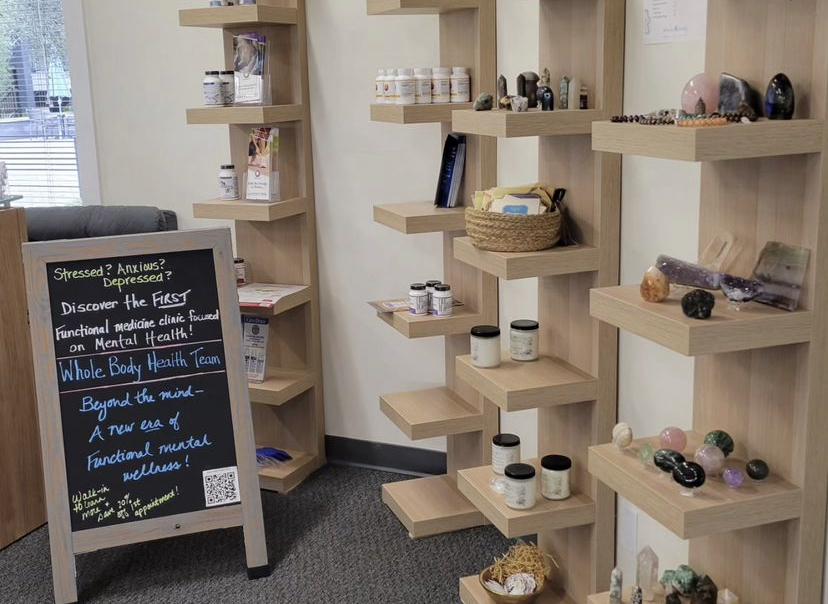
The relocation to the Whole Body Health Team facility aligns with our vision of creating a more comprehensive approach to addressing the opioid crisis. By integrating naloxone distribution with primary healthcare services, we hope to raise awareness about opioid addiction, reduce stigma, and promote harm reduction strategies within the community.
We extend our gratitude to Whole Body Health Team for their partnership and support in making this initiative possible. Together, we are taking meaningful steps towards saving lives and building healthier, more resilient communities.

If you or someone you know could benefit from naloxone or would like to learn more about our services, please visit us at our new location during our operating hours or reach out to Christine Kirkwood at christine@fentanylsolution.org. Together, we can make a difference in the fight against opioid overdoses and addiction.
Join us in our crucial mission to save lives from the fentanyl crisis and drive impactful awareness. Your donation today will make a significant difference!
In an earnest endeavor to combat the burgeoning opioid crisis plaguing Orange County, we hosted resource booths and provided essential tools and education at two significant events: “Addressing Opioid Crisis in Orange County” and “Addressing Public Safety in Orange County.”
Addressing Opioid Crisis in Orange County:
On January 29, 2024, Sonora Elementary School served as the backdrop for a crucial gathering of community leaders, law enforcement officials, and concerned citizens, convened under the leadership of Supervisor Katrina Foley, Costa Mesa Mayor John Stephens, and Costa Mesa Police Chief Ronald Lawrence. This event, which also drew sponsorship from OC Public Works, Newport-Mesa Unified School District, and OC Health Care Agency, aimed to confront the dire implications of the opioid crisis and strategize on effective interventions.
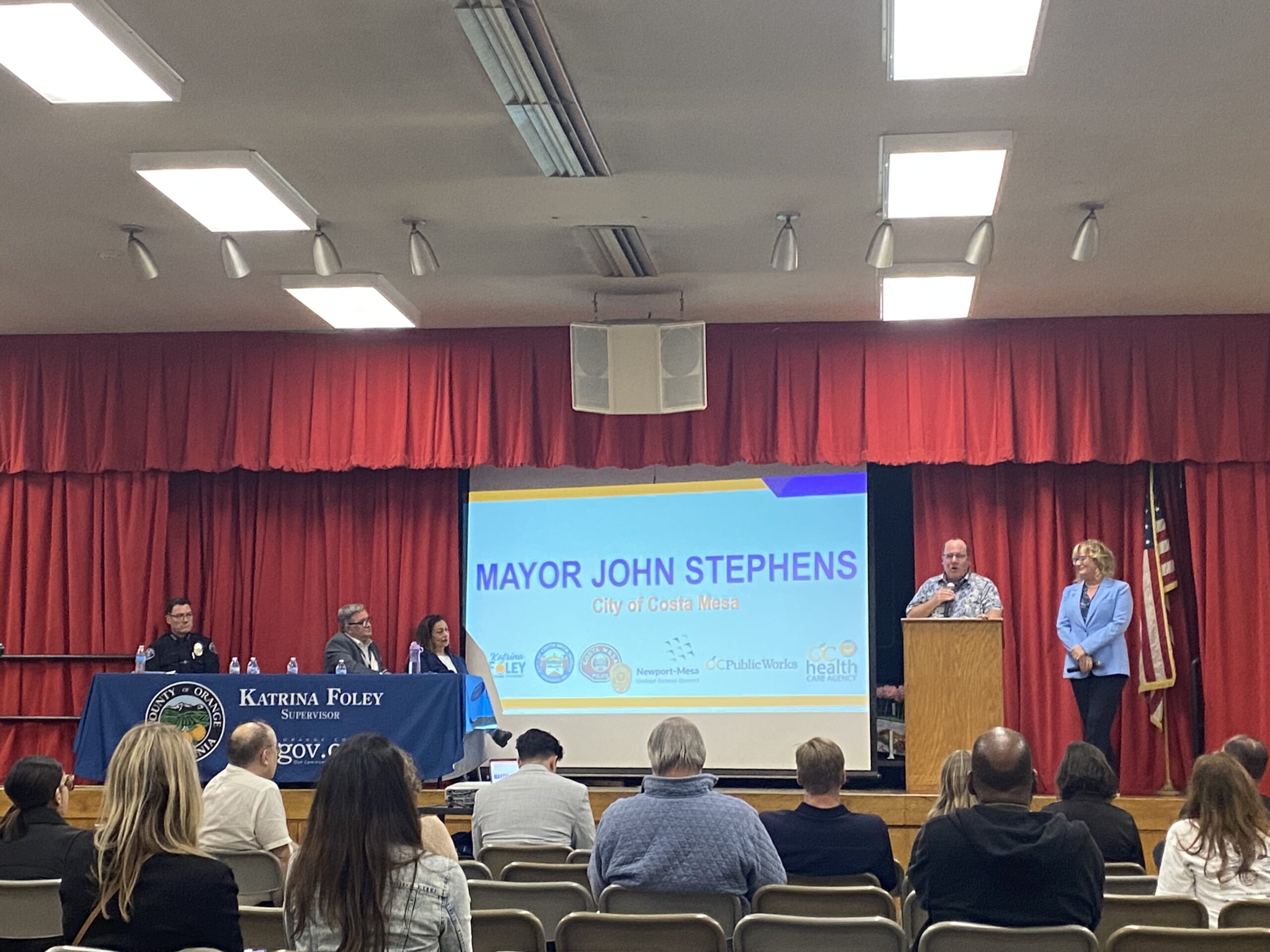
Central to our presence at the event was the provision of life-saving resources, including Narcan and Kloxxado nasal sprays, which can reverse opioid overdoses and potentially save lives. Additionally, FentanylSolution.org distributed fentanyl test strips, empowering individuals to detect the presence of the potent synthetic opioid in substances and prevent accidental overdoses.

Addressing Public Safety in Orange County:
Continuing its impactful engagement, FentanylSolution.org extended its reach to the “Addressing Public Safety in Orange County” event held on January 30, 2024, at Ladera Ranch Middle School. Led by Orange County Supervisor District 5, Katrina Foley, alongside Orange County Sheriff Don Barnes, and Capistrano Unified School District Superintendent Dr. Christopher Brown, the event prioritized proactive measures to enhance community safety.

While the discussions at this event encompassed a broader spectrum of public safety concerns, such as crime prevention strategies, we remained steadfast in its commitment to addressing the opioid crisis. Through its resource booth, the organization continued to provide essential naloxone kits, fentanyl test strips, and educational materials, ensuring that attendees remained informed and empowered to take action.
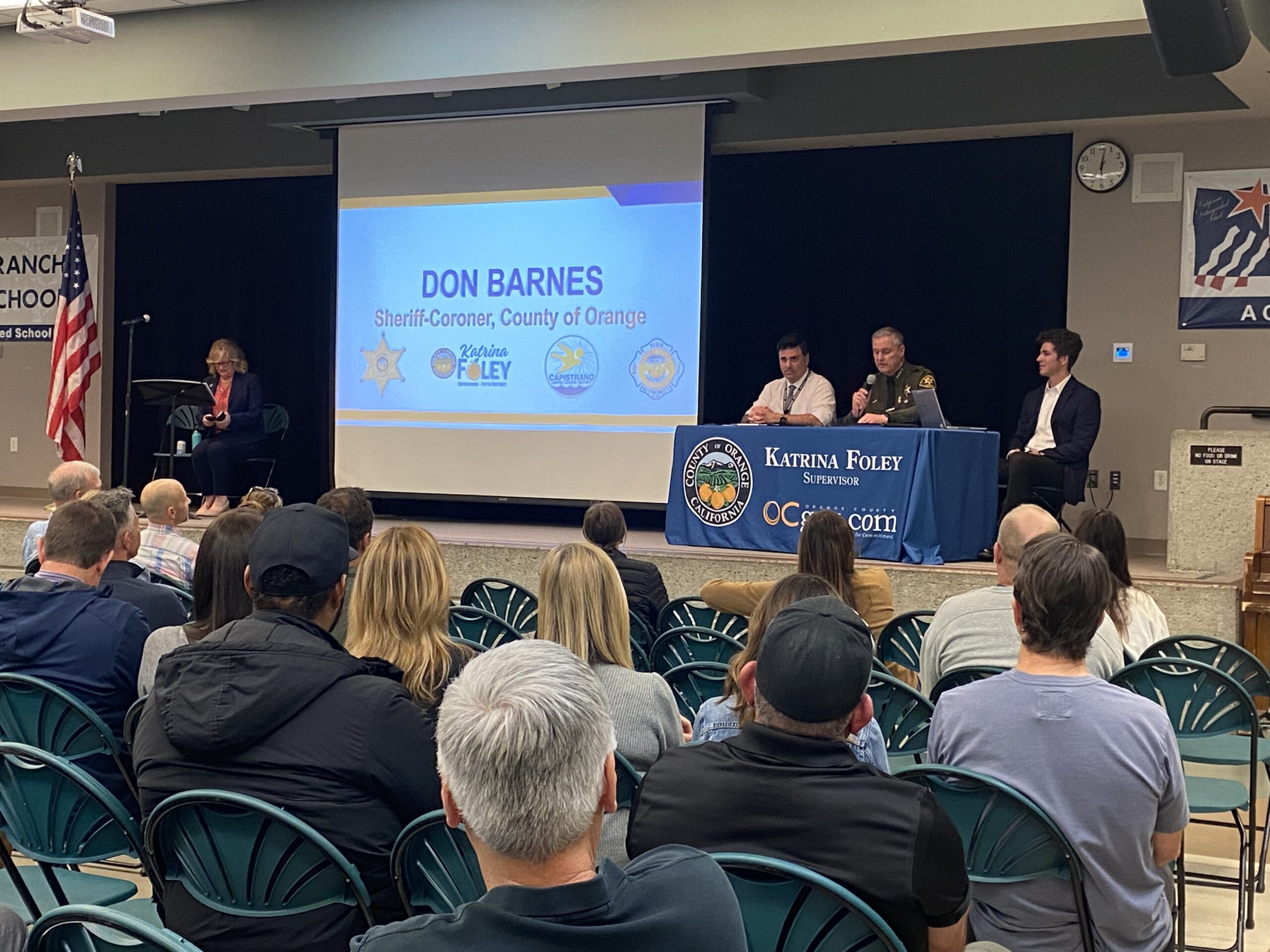
Our participation at both events underscored the organization’s pivotal role in mobilizing community responses to the opioid crisis. By fostering partnerships with local stakeholders and delivering tangible resources and education, we exemplified a proactive approach to tackling one of the most pressing public health challenges of our time.
Join us in our crucial mission to save lives from the fentanyl crisis and drive impactful awareness. Your donation today will make a significant difference!
Come join us for an unforgettable experience at our upcoming event series, STOMP! Fentanyl Fashion Show and STOMP! VIP Launch Party!

STOMP! is intended to raise awareness and funds to combat the crisis and lower death due to fentanyl poisoning while giving our guests a night to remember.
Begin your STOMP! Journey at STOMP! VIP Launch Party for an evening of entertainment, networking, and raising awareness. Sponsored by Be Good Restaurant & Experience. Get ready to indulge in an exclusive celebration featuring thrilling performances by Freedom Aerial, Jennalyn, and Joe Sparrow. Sip on signature cocktails, mocktails, and non-alcoholic concoctions while mingling in our VIP lounge while enjoying flair bartending by Mikey D’Amato.

Next stop, the main event, STOMP! Fentanyl Fashion Show!
In collaboration with Todd Herschberg, the Founder of OCEAN, Orange County’s premier networking group, and Rogue Collective, we’re creating an evening that seamlessly blends fashion and philanthropy. This event isn’t just about style; it’s about making a real difference in the fight against fentanyl poisoning. Showcasing skilled models, designers, and hair & makeup artists hailing from across Southern California. With collections by renowned brands like Active Pear, David Swimwear, Otaon, and emerging talents, this event promises to be extraordinary. Expect to be captivated by the runway presence of film and fashion icons. And don’t forget to stay mesmerized by the flair bartending talents of TikTok sensation, Mikey D’Amato. With sponsors such as Lazy Dog, SenderOne, popl, John’s Incredible Pizza, Newport Beach Charcuterie Aftershock Festival and much much more, this is a show you definitely won’t want to overlook.
Additionally, don’t miss out on our silent auction, featuring artwork generously donated by various artists, along with an array of products and experiences. The auction will be set up in a predominant area at Rogue Collective so that our guests can look before and during the fashion show. It’s a perfect opportunity to support the cause while acquiring something special for yourself.

Take advantage of our early bird discount!

Be part of the experience whether you attend one or both and purchase tickets here!
Recently, we had the privilege of attending and/or hosting resource tables at several significant events, spreading awareness, providing valuable information to the public and distributing naloxone and fentanyl test strips. Here’s a look at our involvement and its impact on the community.
Newport Beach Police Appreciation Luncheon
On April 26, 2024, we participated in the 51st Annual Newport Beach Police Appreciation Luncheon, hosted by the Newport Beach Chamber of Commerce at the PENDRY.
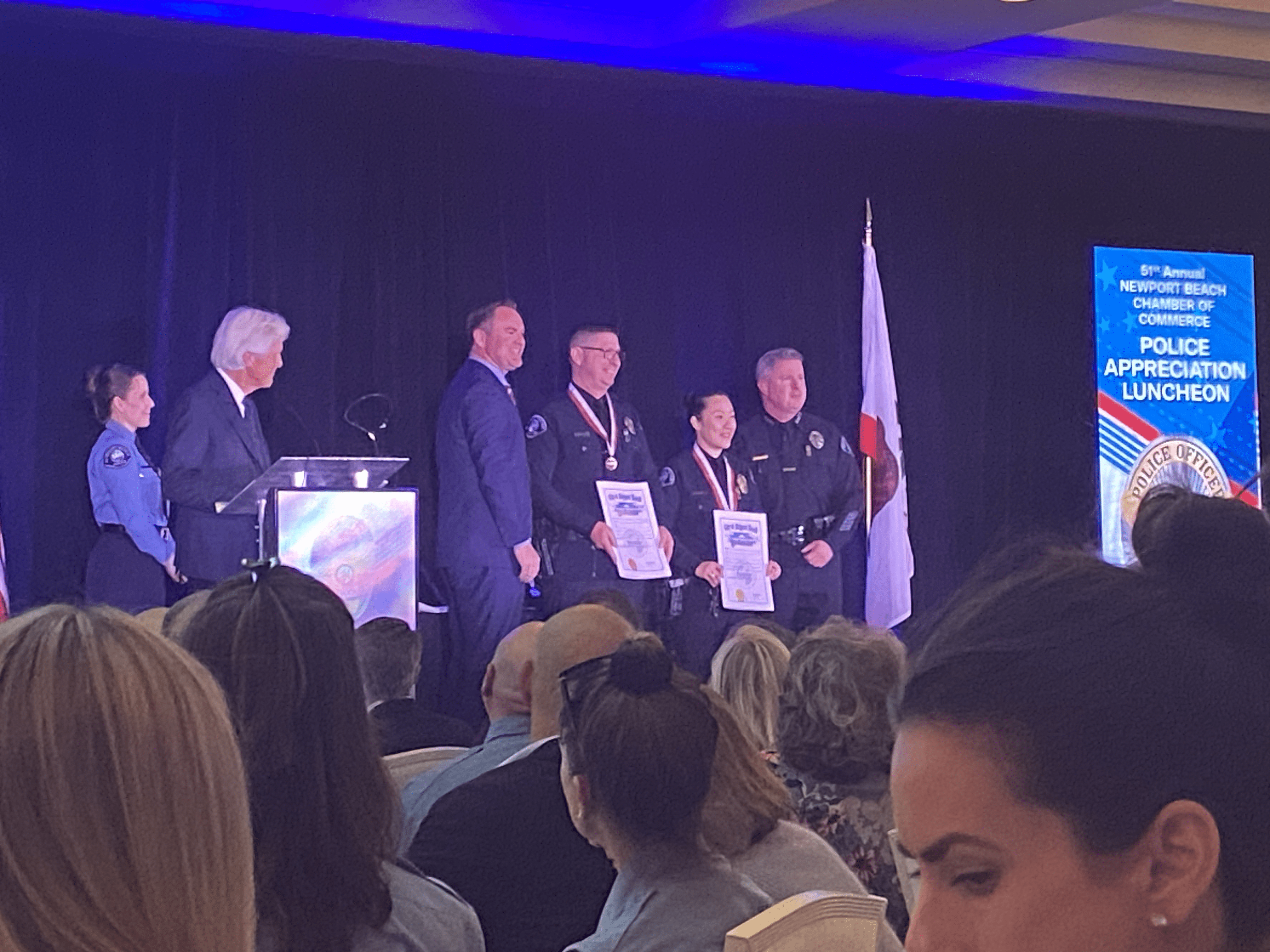
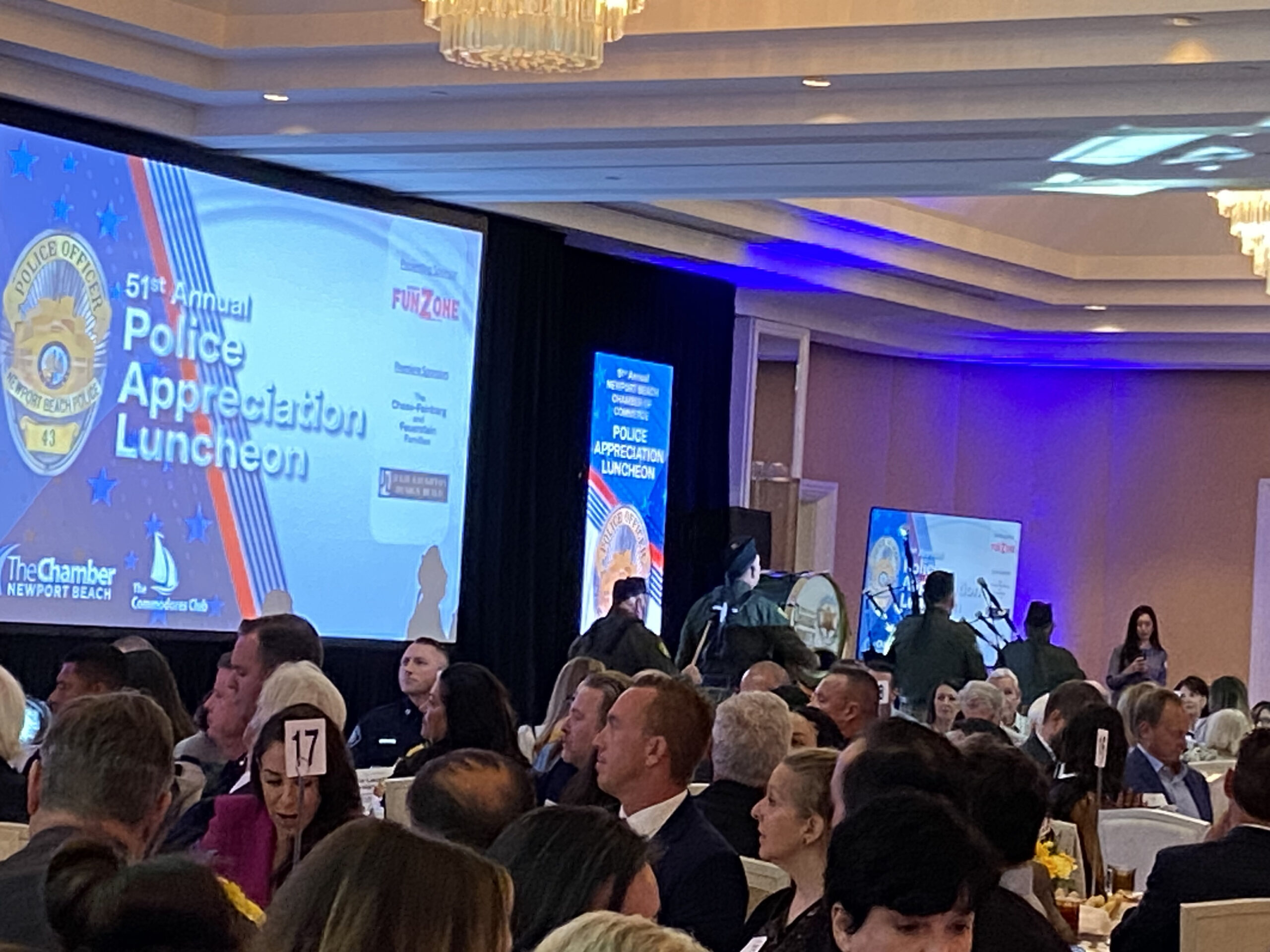
Featuring special guest emcee Keith Morrison from NBC’s Dateline, the event provided a wonderful opportunity to connect with law enforcement and the community, demonstrating our support for those who risk their lives to keep our community safe.
Blossoming Together Event
On April 13, 2024, we were part of the Orange County Blossoming Together event in Irvine. This vibrant celebration of cultural diversity and wellness, organized by the OC Health Care Agency’s Office of Wellness and Suicide Prevention in partnership with nonprofit organizations, aimed to support veterans, the LGBTQ+ community, and individuals from diverse cultural backgrounds. By participating, we highlighted the intersection of mental health and substance abuse, emphasizing the need for a holistic approach to wellbeing.

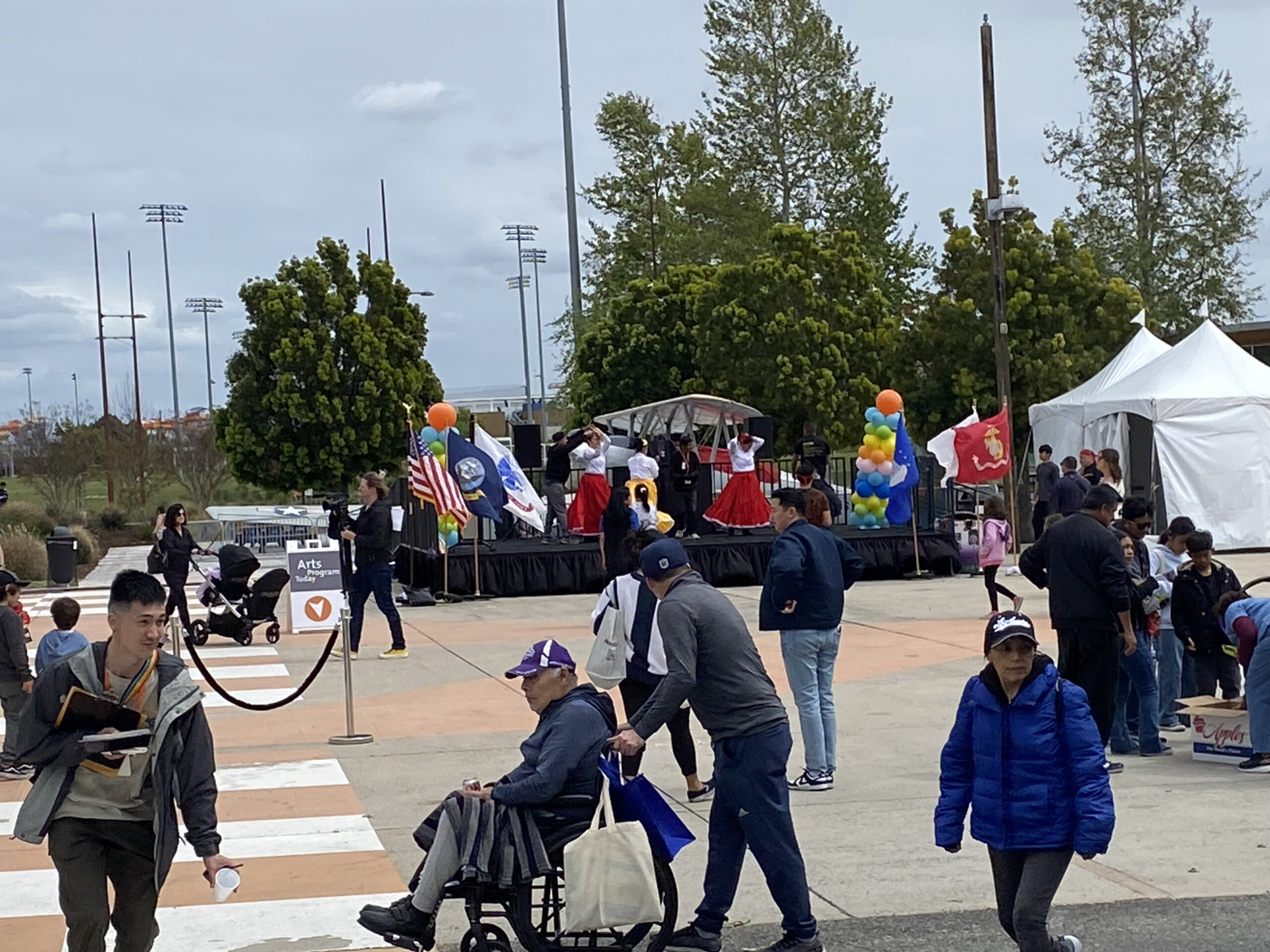
By hosting a resource table, we provided educational materials and support resources to attendees, raising awareness about the dangers of fentanyl and the importance of prevention. The community’s response was overwhelmingly positive, reinforcing the impact of combining advocacy with popular community events.
2024 Supplier Outreach Event
On May 16, 2024, we hosted a resource table at the 2024 Supplier Outreach event in Fountain Valley. This event connected local businesses with government projects, offering a platform to showcase products and services. Our presence allowed us to engage with local business leaders and highlight the critical issue of fentanyl in our community. By fostering these connections, we aim to integrate our advocacy efforts into broader community and business initiatives, enhancing collective action against the fentanyl crisis.
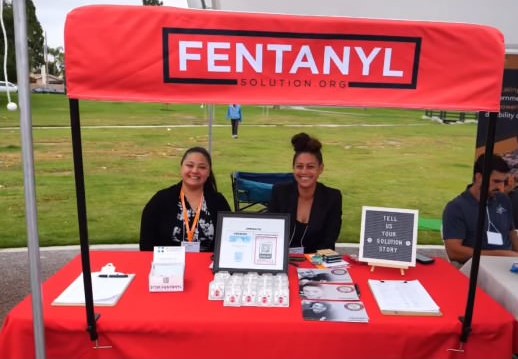
National Fentanyl Awareness Day at Angel’s Game
We observed National Fentanyl Awareness Day on May 9, 2024, by organizing a special event that brought together families, organizations, and community members to cheer for the Angels baseball team.
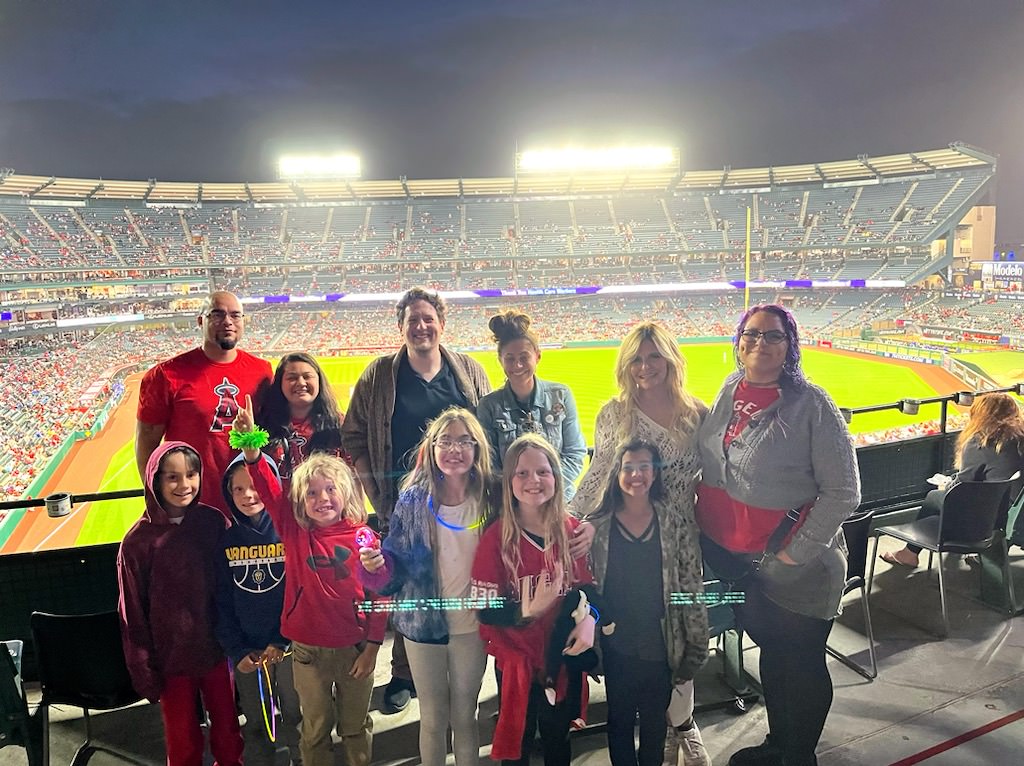
This event held deep and special significance, as it was dedicated to honoring the memories of all victims and to the memory of Tyler Skaggs, an Angels pitcher who tragically died from fentanyl poisoning. Our event not only provided an opportunity for the community to unite in support of the Angels but also to reflect on the importance of education, prevention, and advocacy in the fight against fentanyl.
Mission Viejo Pride Event
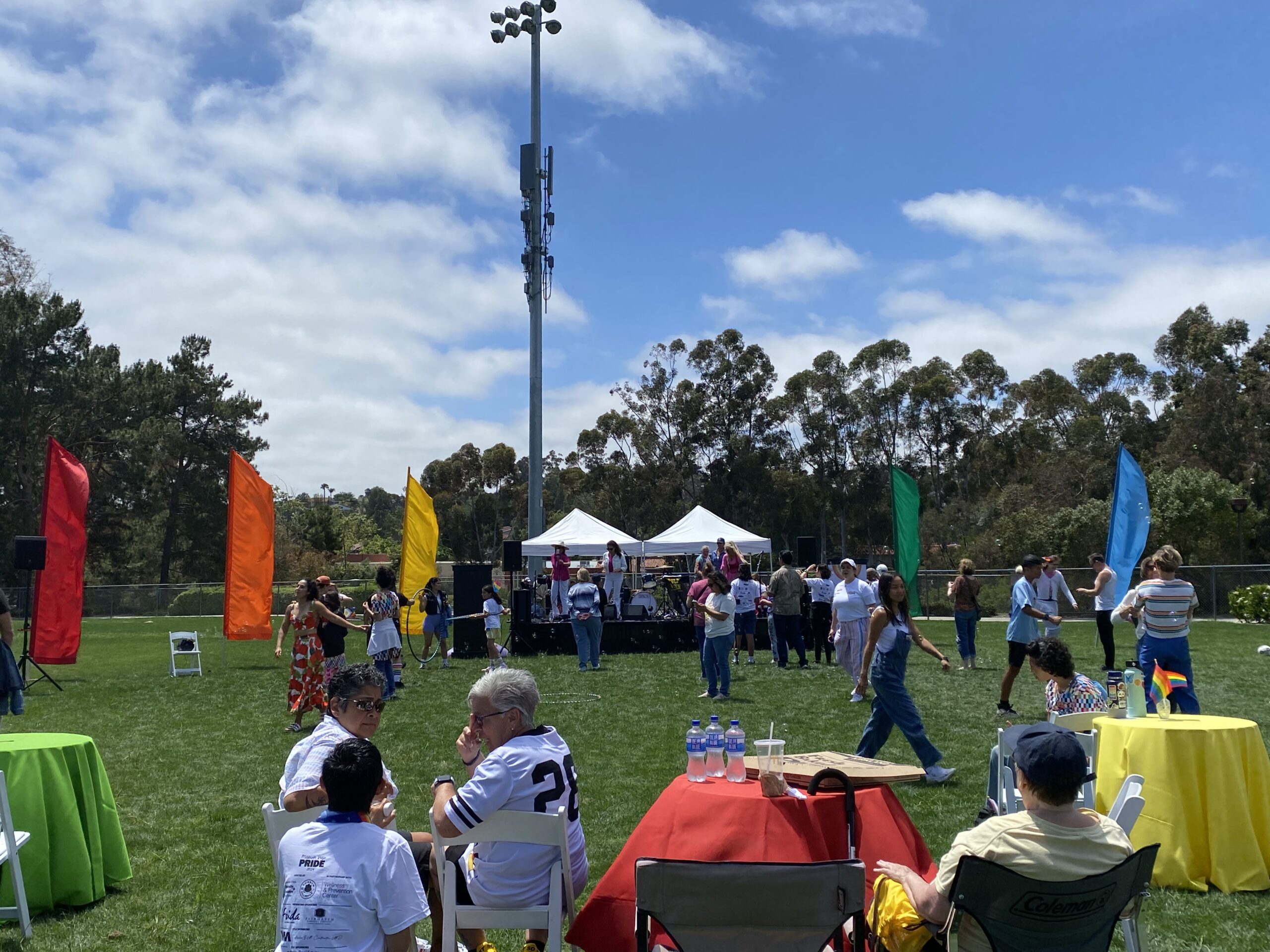
On Saturday, June 8, 2024, we proudly hosted a resource table at the Mission Viejo Pride Event, held at the World Cup Soccer Field. Organized by Mission Viejo’s Diversity + Inclusion Task Force and Saddleback College’s Rainbow Collective, this free event aimed to show LGBTQI+ families that our community is safe, welcoming, and values diversity and inclusivity.
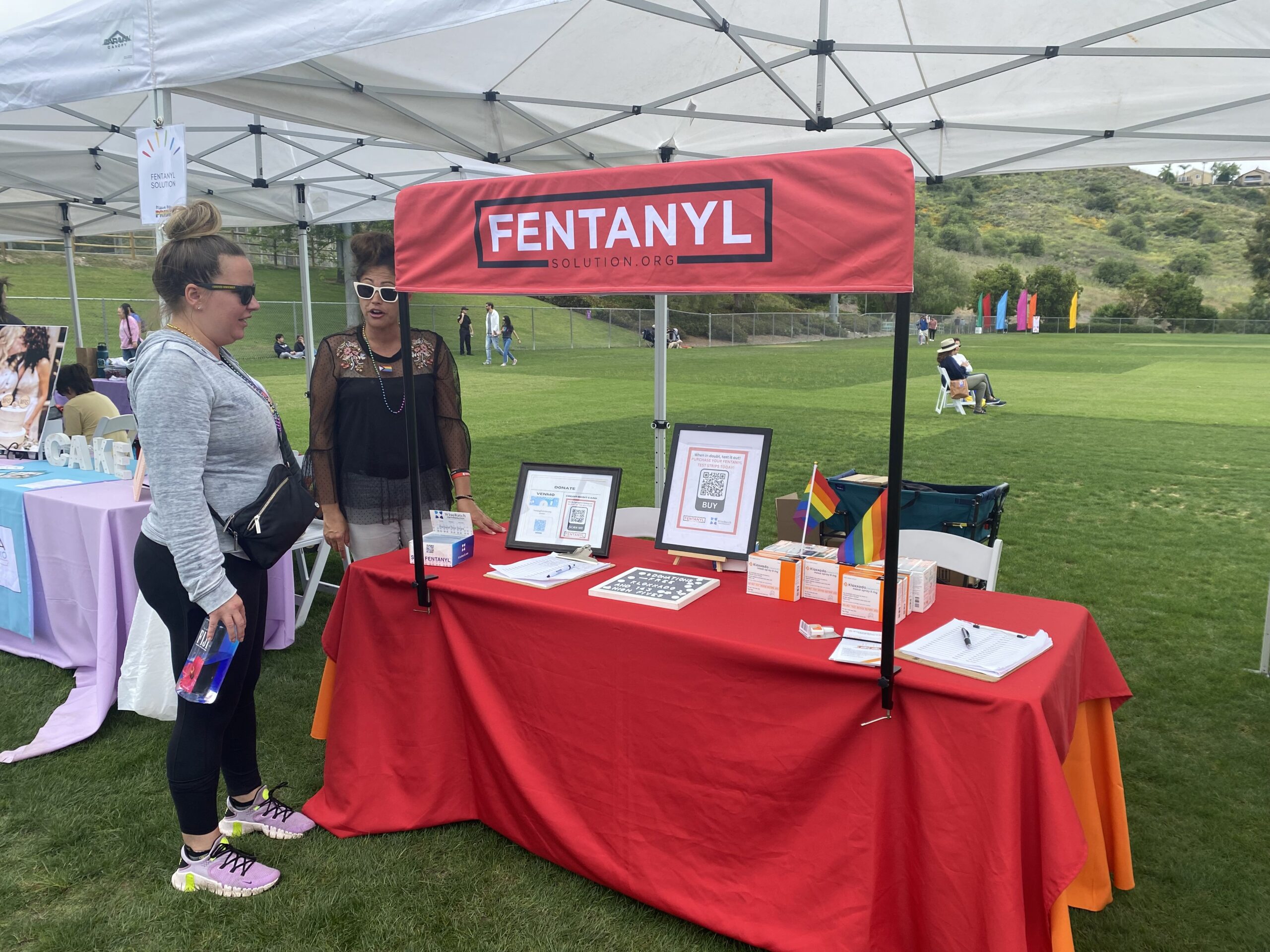
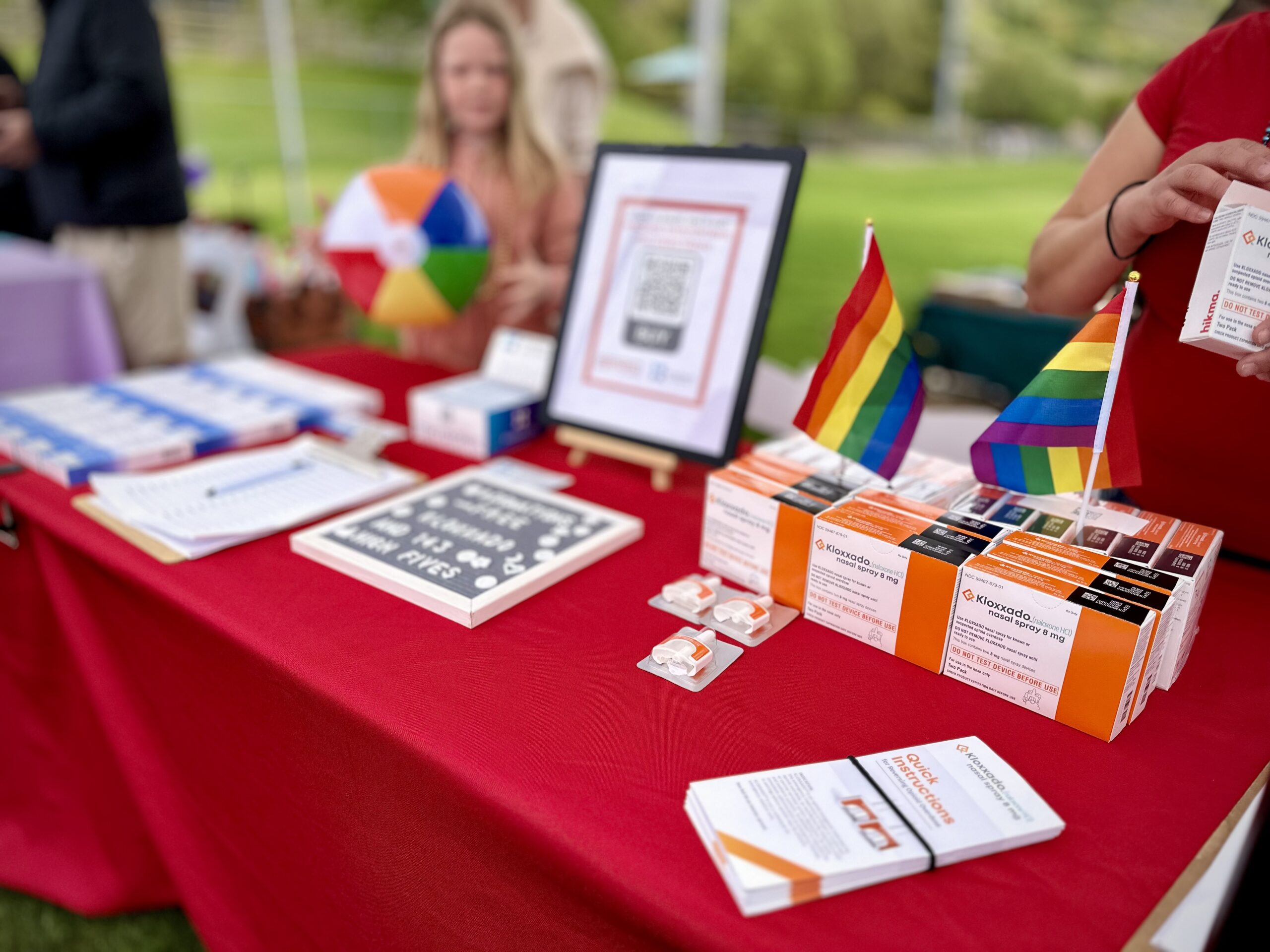
We provided valuable information on fentanyl awareness, prevention, naloxone, and fentanyl test strips, engaging attendees with educational materials and support resources. By connecting with the community, we continue to make a positive impact on public health and safety.
Our Impact and Dedication
At each of these events, our team worked diligently to provide essential resources, raise awareness, and foster community connections. Our efforts are driven by a commitment to making a tangible difference in the lives of those affected by the fentanyl crisis. By participating in these diverse events, we are able to reach a wide audience, educate the public, and advocate for effective policies.
The impact of our work is evident in the increased awareness and engagement we have seen within the community. Families, businesses, and individuals are becoming more informed about the dangers of fentanyl and the steps they can take to protect themselves and their loved ones. Our resource tables serve as a vital touchpoint for those seeking information and support, reinforcing the importance of education and advocacy in combating the fentanyl crisis.
Join us in our crucial mission to save lives from the fentanyl crisis and drive impactful awareness. Your donation today will make a significant difference!
We provided free naloxone and fentanyl test strips at two pivotal community events led by Supervisor Katrina Foley. These initiatives aimed to empower individuals with the knowledge and tools necessary to prevent fentanyl-related deaths in Orange County.
Fentanyl Town Hall at Orange Coast College (OCC)
On Wednesday, March 20, 2024, Supervisor Katrina Foley collaborated with the Costa Mesa Police Department and the OC Health Care Agency to host a fentanyl town hall for OCC college students. This event provided an invaluable opportunity for students to learn about the dangers of fentanyl and effective prevention strategies.
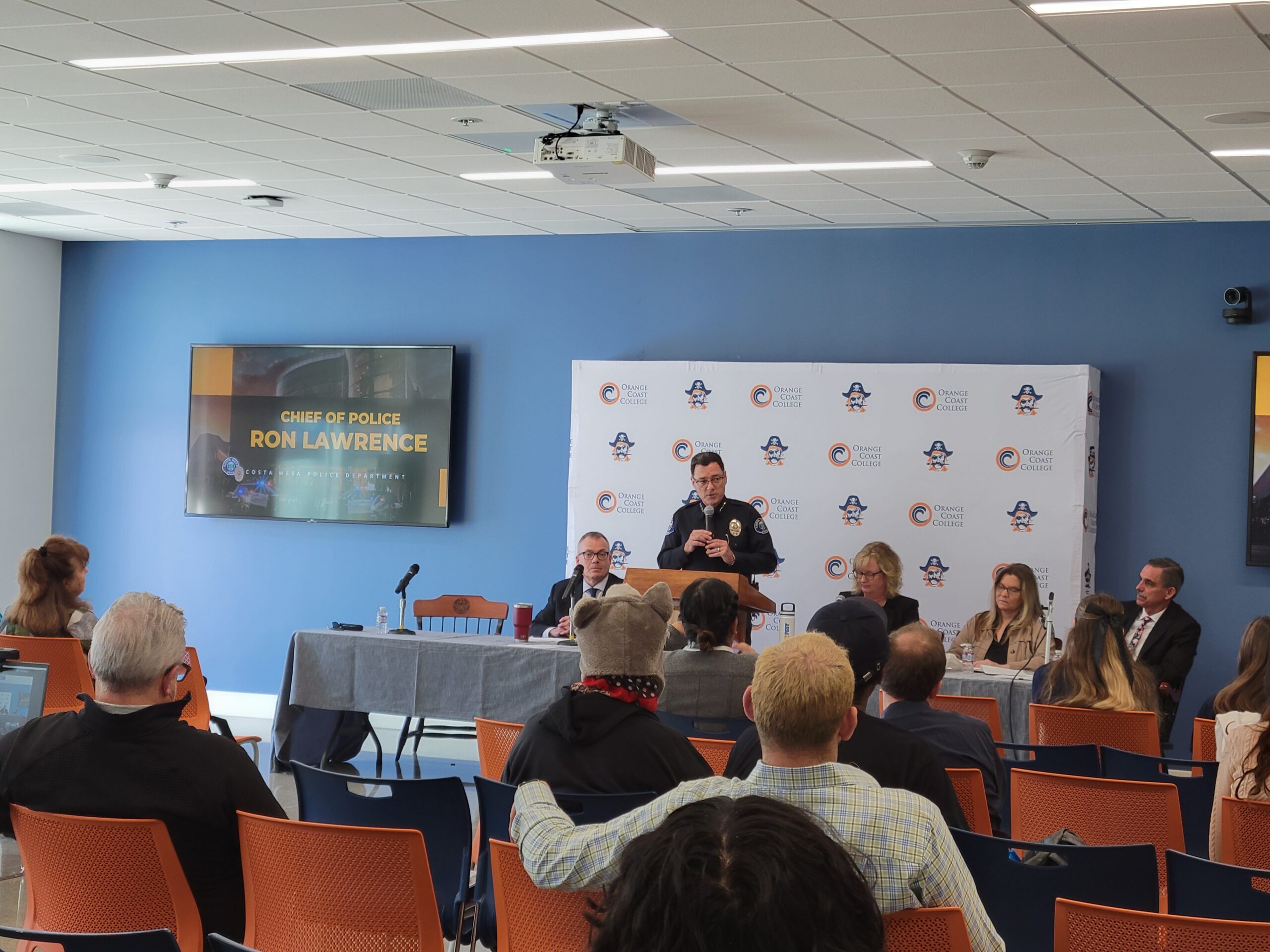
The town hall featured presentations from experts who discussed the impact of fentanyl in the community, shared real-life stories, and provided crucial information on how to recognize and respond to an overdose. One of the highlights of the event was the distribution of naloxone, a life-saving opioid overdose reversal drug. Attendees received hands-on training on how to administer naloxone, ensuring they were equipped to save lives in emergency situations.
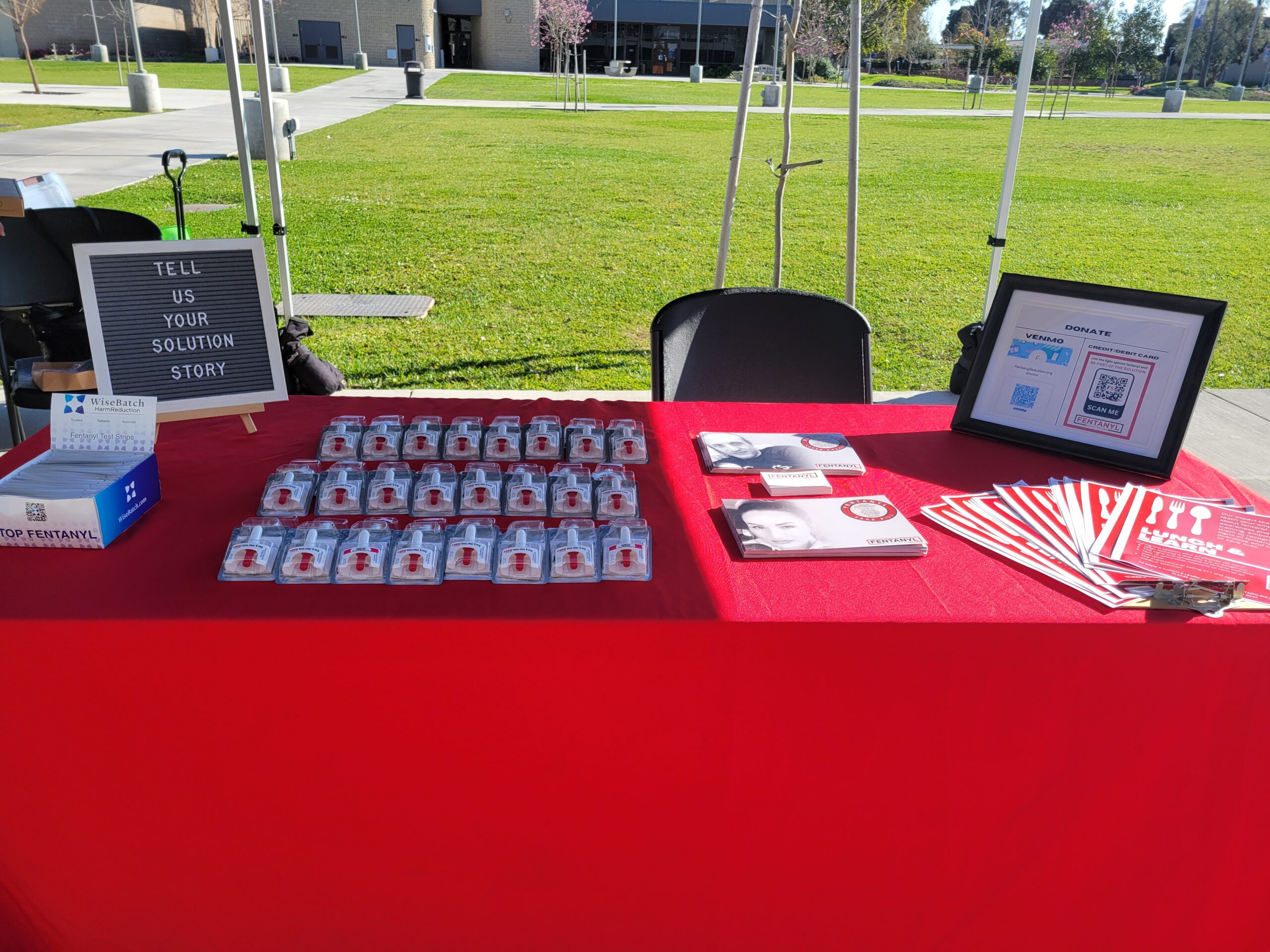
Additionally, we distributed fentanyl test strips to help students identify the presence of fentanyl in substances, further empowering them to make safer choices. The event underscored the importance of education and proactive measures in addressing the fentanyl crisis, leaving attendees better informed and prepared.
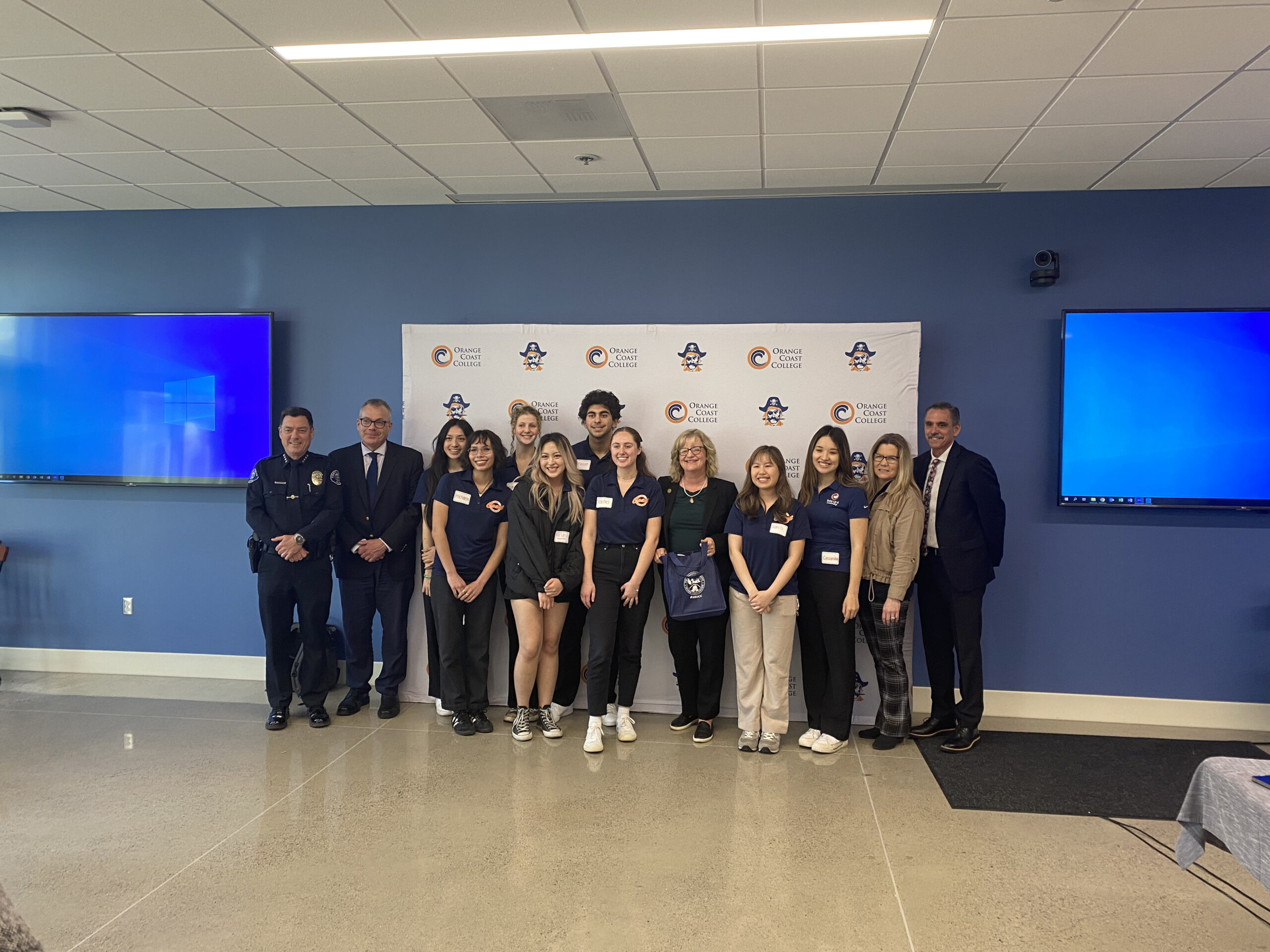
Spanish-Speaking Fentanyl Town Hall in Aliso Viejo
Recognizing the diverse needs of the community, we also participated in a fentanyl town hall specifically designed for Spanish-speaking individuals. This event, held in partnership with Supervisor Katrina Foley, the City of Aliso Viejo, Aliso Viejo’s Sheriff’s Department, and the OC Health Care Agency, aimed to extend outreach and resources to a broader audience.
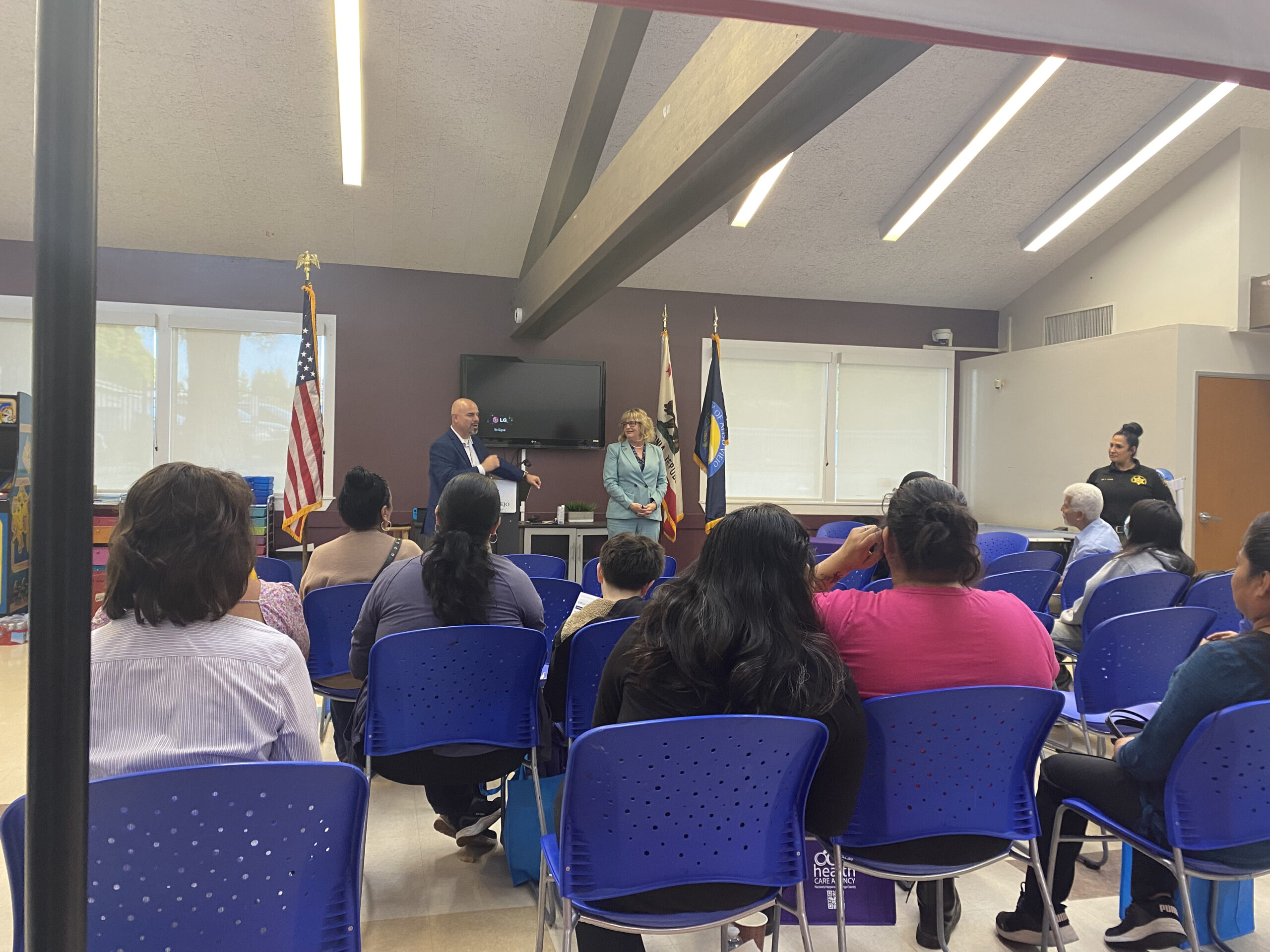
During the town hall, attendees received critical information on fentanyl prevention and resources available in the community. Experts provided facts about the opioid crisis, shared prevention tips, and offered practical advice on how to protect oneself and loved ones from fentanyl exposure. The event emphasized the importance of community involvement and collective action in combating the fentanyl epidemic.
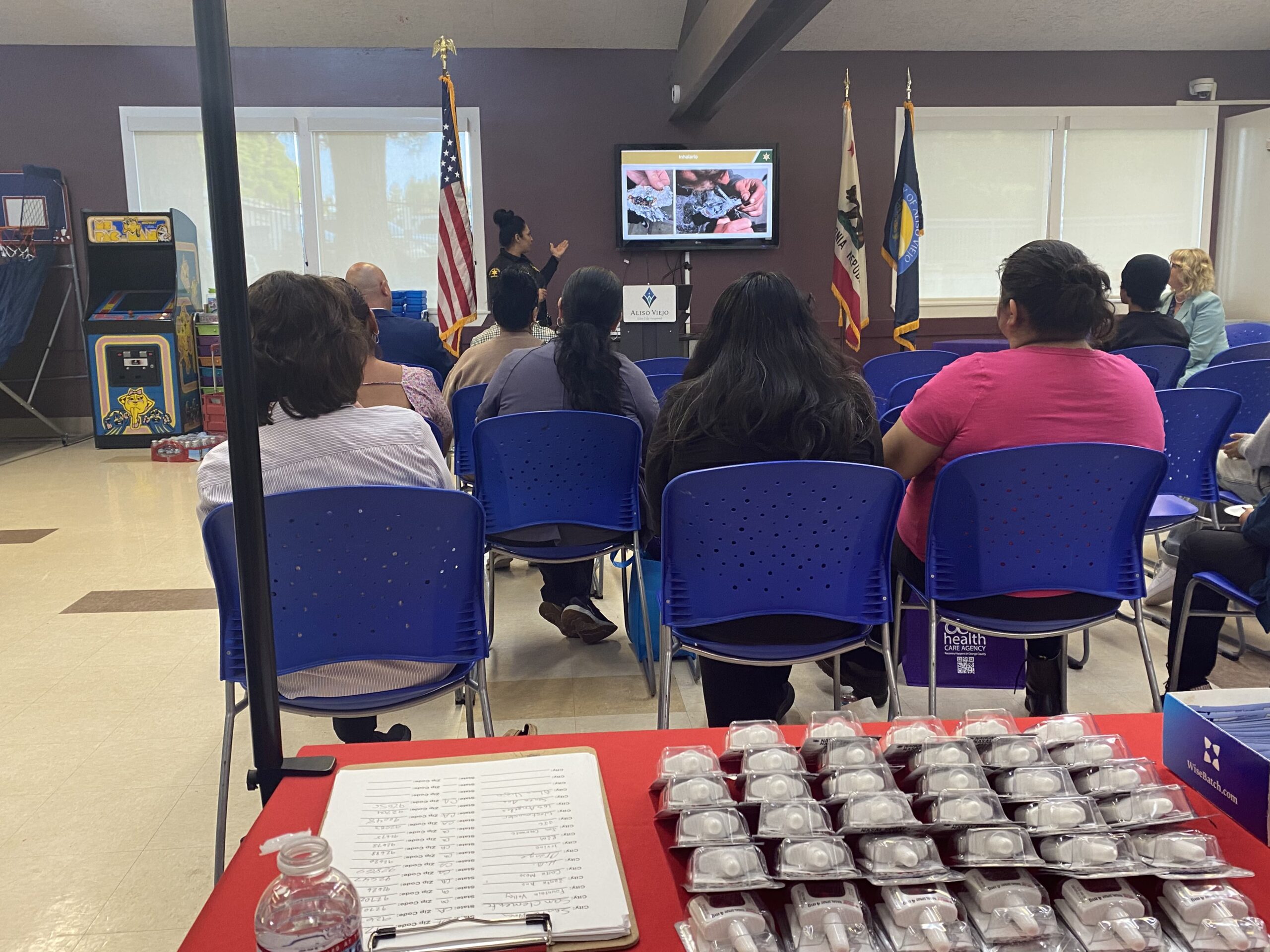
Our resource booth at this event provided free naloxone and fentanyl test strips, along with instructions on their proper use. This initiative was particularly significant as it addressed language barriers and ensured that Spanish-speaking individuals had access to essential life-saving tools and information.
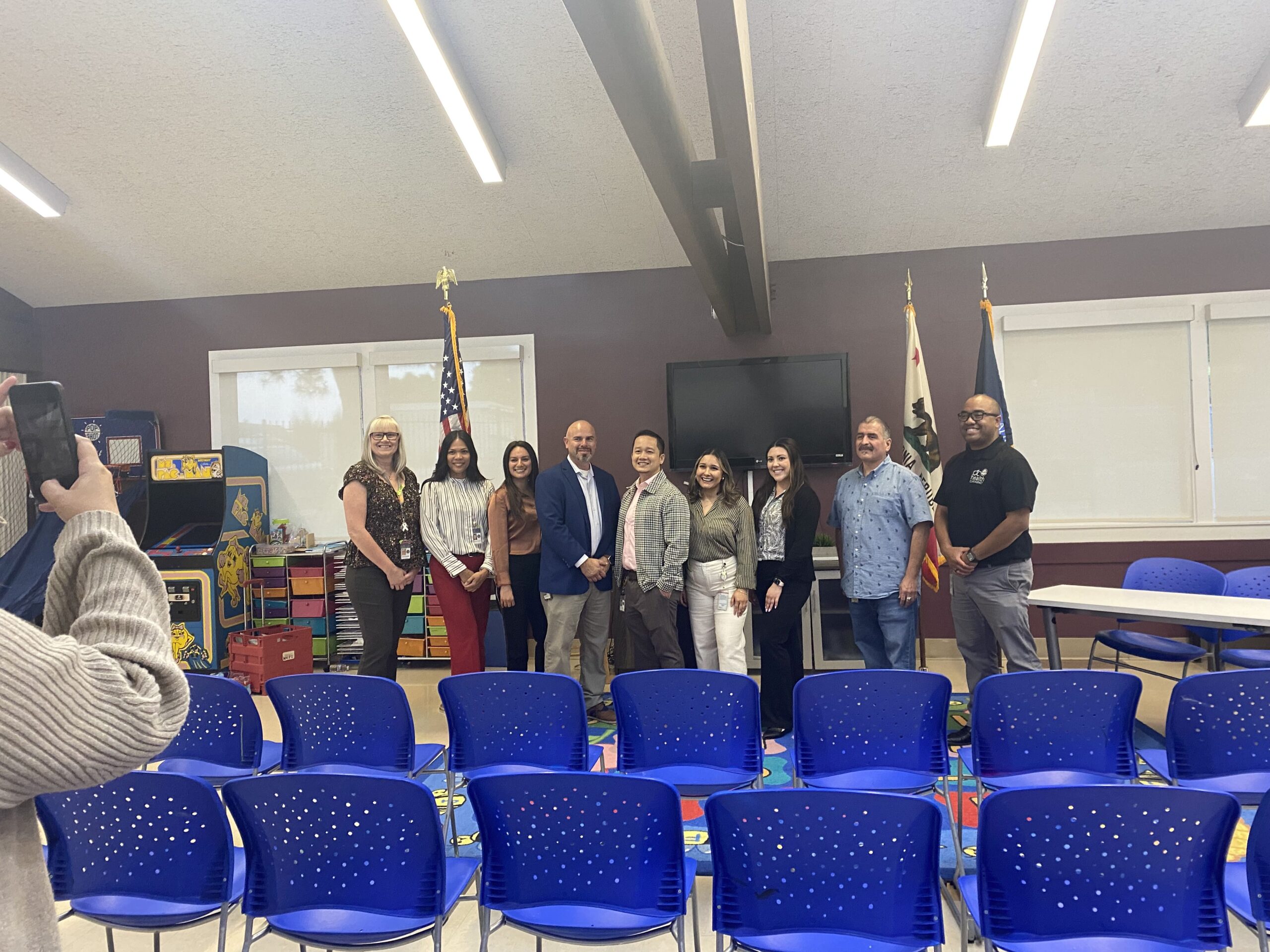
Empowering the Community Through Education and Resources
We remain committed to its mission of combating the fentanyl crisis through continuous education and advocacy efforts. By providing free naloxone, fentanyl test strips, and training at these town halls, we empower individuals to take proactive steps in preventing overdoses and saving lives. These events exemplify the organization’s dedication to making a tangible impact in the community and fostering a safer, more informed society. Together, we can make a difference and combat the fentanyl crisis in Orange County and beyond.
Join us in our crucial mission to save lives from the fentanyl crisis and drive impactful awareness. Your donation today will make a significant difference!
